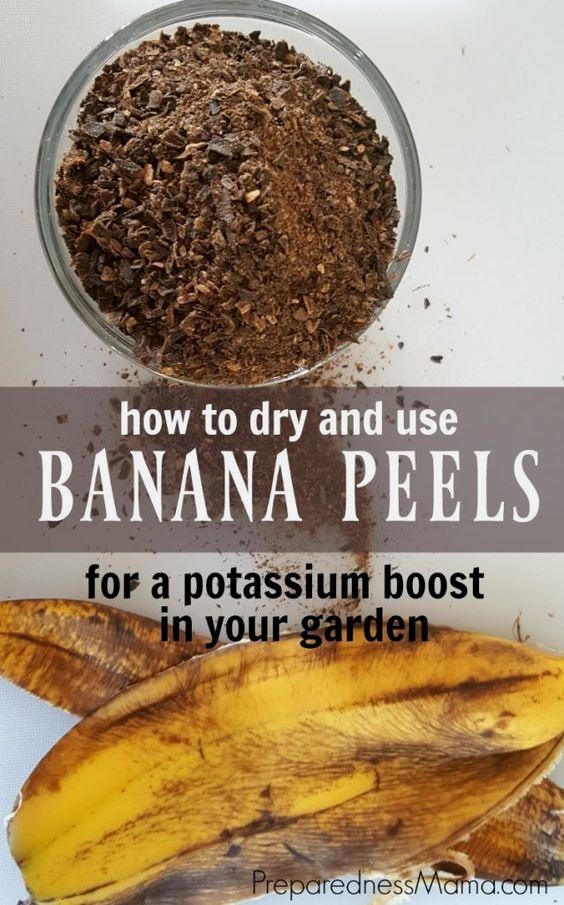Banana Peel Fertilizer: Using Banana Peels in the Garden
USING BANANA PEELS IN THE GARDEN SO THEY ACTUALLY FERTILIZE YOUR PLANTS
So now that you’ve gotten that bit of garden science mastered, let’s consider the most practical and effective ways to use banana peels as fertilizer for plants.
1. Add Banana Peels to Your Compost or Worm Farm
Banana peels will do the most good for your garden if they’re digested by your worms or the microbes in your compost for awhile along with all the other kitchen scraps and yard trimmings. This will produce a balanced homemade fertilizer your plants can actually use.
Plus there’s no added effort dehydrating or soaking or grinding. Just into the compost with those banana peels, along with all your other food scraps.
2. Use Banana Peels as a Pest Repellent
Burying chopped banana peels at the surface of the soil, while it may not be the most effective homemade fertilizer, may help deter aphids and other insects out to destroy your crops. Orange peels placed around the plant are also supposed to help repel insects, so that may be worth trying as well.
HOW TO MAKE BANANA PEEL FERTILIZER FOR PLANTS IF YOU WANT TO EXPERIMENT
If you’re still keen to make your own banana peel fertilizer with nothing but banana peels, you have some options for garden experiments. Leave a comment to share your experience using banana peels as fertilizer if you try one of these methods, OK?
Option 1: Bury Whole Banana Peels
I was taught to plant a whole banana peel beneath my tomato plants, but it turns out this might not be the best method for using banana peels in the garden. Buried in the soil this way, they’ll take a long time to break down, all the while siphoning away nutrients from my tomato plants and potentially creating a barrier or air pocket around their roots.
If you do choose to try this method, consider placing the peel off to the side of the hole instead of right below the plant.
Option 2: Side Dress with Chopped Banana Peels
To help the banana peels break down, chop them into small pieces before burying them just beneath the soil surface near the plant you want to nourish.
Option 3: Make Dried Banana Peel Fertilizer
This option seems like a lot of extra work (and possibly electricity), but if you want to try making dried banana peel fertilizer, you need to gather your banana peels and dehydrate them in the oven or in a dehydrator until they’re crispy.
Use a blender or food processor to grind the dried banana peels into a powder, which you can use as a granular fertilizer the way you would with purchased fertilizers, either as a side dressing or to mix with garden soil during planting.
Option 4: Make a Banana Peel Water Fertilizer
Banana peels can be steeped in water to make a foliar feed or liquid fertilizer. To make liquid banana peel fertilizer, place banana peels in a jar of water for a week before removing and composting banana peels. Dilute 1 part banana peel water fertilizer with 4 parts water.
You can use banana peel water fertilizer at the base of plants or you can use it as a foliar spray. Some proponents claim banana peel water fertilizer will help repel aphids.
Though rhubarb leaves are poisonous if we consume them, some people make a pest repellent spray and foliar feed with them as well.
Option 5: Fermented Banana Peel Fertilizer
Some folks allow the banana peel water to ferment for an additional month or more to make a banana peel vinegar they use on acid-loving plants like blueberries. If you try this, dilute in plenty of water to avoid burning your plants.
Option 6: Plant Banana Peel Pieces with Direct-Seeded Crops
Use small pieces of banana peel under seeds as you plant them. Some adherents to this method claim that the decaying banana peel gives food to the developing plant, though I’d be concerned the roots wouldn’t be able to break through the peel.
Option 7: Banana Peel Slurry
Running your soaked banana peels through the blender can help them break down faster. Keep the water from your banana peel fertilizer tea, but instead of tossing the peels in the compost, blend them into a slurry. The yellow mush you’ll wind up with can be used as a (rather messy) side dressing.
If you’re keen to get the most out of your banana peels, you can try adding them to your homemade fruitfly trap before composting them. Fruitflies find the scent of banana hard to resist.
As for me, I’m going to stick with the no-fuss method of sending our banana peels to the compost bin.
